Iona , the Abbey and St Columba
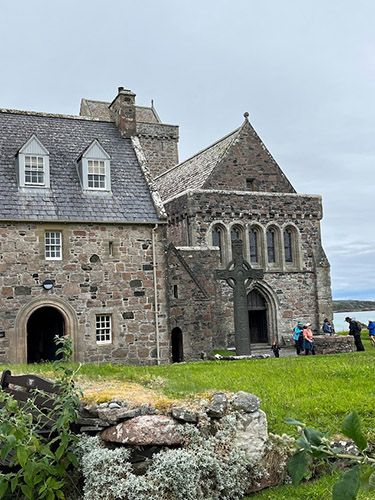
Iona Abbey is one of the oldest Christian religious centres in Western Europe. The abbey was a focal point for the spread of Christianity throughout Scotland and marks the foundation of a monastic community by St. Columba, when Iona was part of the Kingdom of Dál Riata. 1
Iona Abbey is the spiritual home of the Iona Community, an ecumenical Christian religious order, whose headquarters are in Glasgow. The Abbey remains a popular site of Christian pilgrimage today.1
As you approach the island the cottages which line the shoreline are an artist's delight and I have certainly made a mental note in my mind studio to do a painting of this scene.
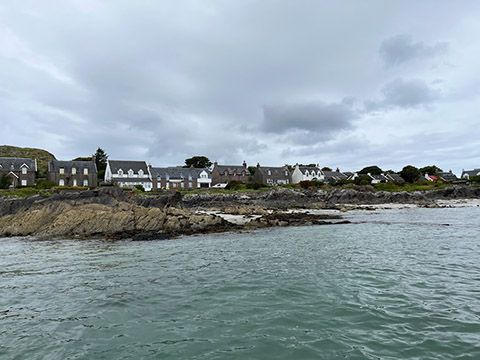
And as you step ashore the amount of stone work is dominant and adds to the beauty of the landscape. The fences have been made using the drystone technique but the buildings as shown in the bottom level of the image below do contain some kind of mortar. I love the way the thin slivers of stone have been inserted into the small spaces left by the larger stones. And aren't the patterns fascinating?
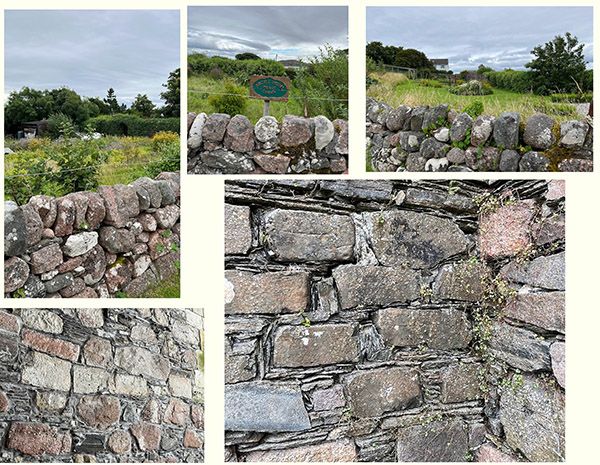
For me the beauty in the ruins of these buildings is wonderful and please do take a few minutes to examine the amazing array of tones in the colours of the stones and the textures - weathered by time and there to tell hundreds of years of narrative!
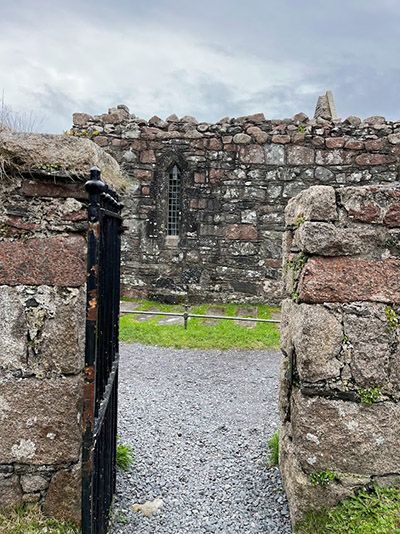
But on with a little about the history.
In 563, Columba came to Iona from Ireland with twelve companions, and founded a monastery. It developed as an influential centre for the spread of Christianity among the Picts and Scots.1
There are the remains of four ancient high crosses on Iona, dedicated to St Martin, St Matthew, St John and St Oran. The St Martin’s Cross was carved between 750 and 800 and still stands complete and on its original site.2
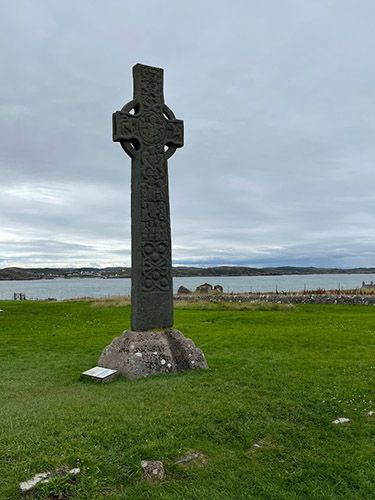
Below is MacLean’s Cross, a tall free standing cross, was probably erected in the 1400’s. The cross is a rarity, as only a few of Iona’s stone cross survived the Reformation and apparently 357 of them did not, which is a great shame. The crosses were pray stations for pilgrims coming to the Island.3
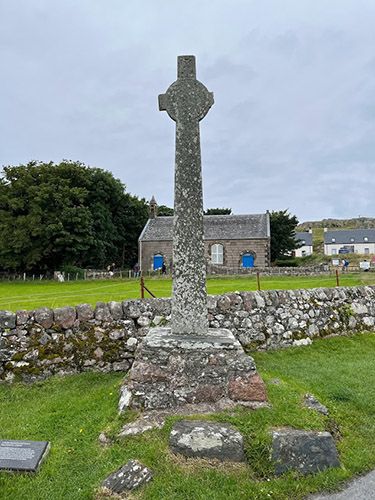
Maclean's Cross stands beside the ancient 'street of the dead' near Iona Abbey. The cross stands at the place where the processional path crosses a path leading from St Ronan’s Port, the current boat landing.The carving style is traditional of the 'Iona school' of carvers who were active here during the 15th century.4
The cross is over three metres high and is carved from a single solid block of stone. The design is of the type known as disc-head, with intricate foliage and plaitwork designs on both sides. There are animals carved on the east face and a crucifixion on the west side.4
On the foot of the cross shaft is an armed horseman who may be meant to represent the MacLean chief who paid for the cross to be carved around the year 1500.4
Like other Celtic Christian monasteries, Columba's monastery would have been made up of a number of wattle and timber, or wood and thatch, buildings. These would have included a central church or oratory, the common refectory or kitchen, the library or scriptorium, monk cells or dormitories, and a guest house for visitors including pilgrims. It is believed that around 800AD the original wooden chapel was replaced by a stone chapel.1
A restored C13th Abbey now stands on the site of Columba's church.
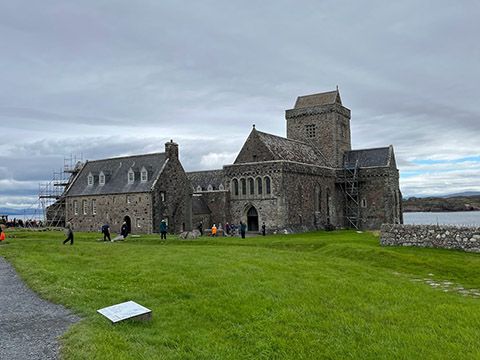
The interior of the Abbey is quite beautiful with a lovely marriage of wood and stone - always a pleasure to an artist's eye.
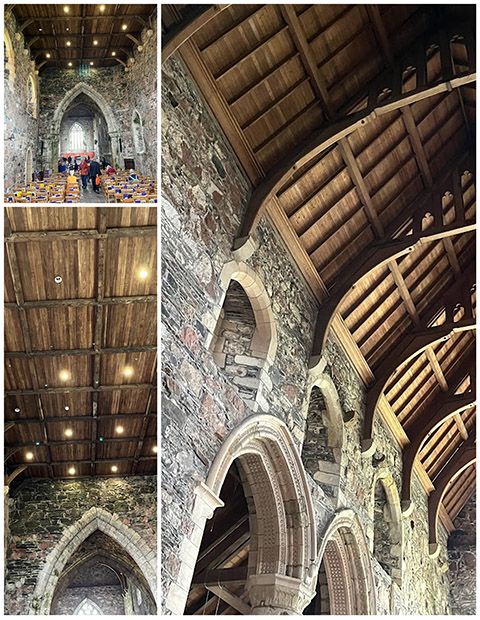
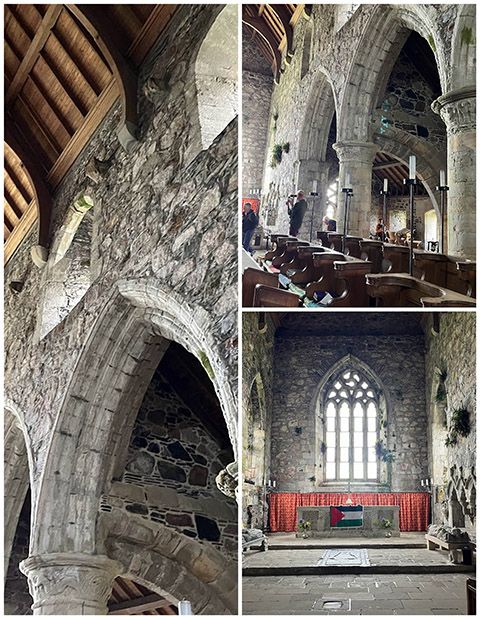
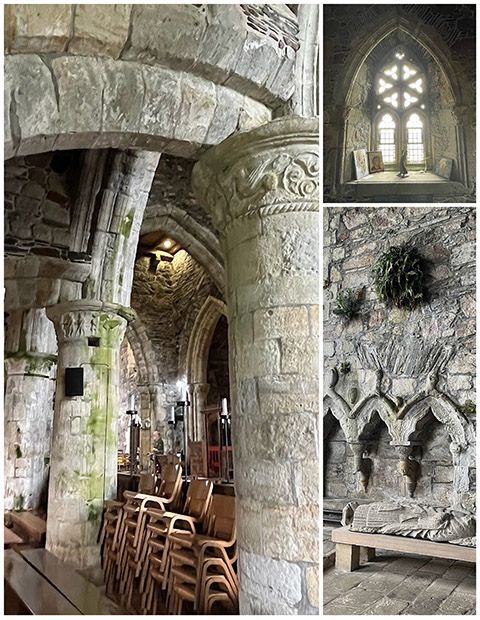
St Columba’s Shrine, a small stone building beside the door to the abbey church, may date from the 9th or 10th century. By this time, Viking raids blighted the coasts of the British Isles, and raids on Columba’s monastery were a frequent occurrence.5
Early in the 9th century, some of the saint’s relics were taken for safekeeping to Dunkeld in Perthshire, and Kells in Ireland. The famous Book of Kells, now on display in Dublin, was probably made on Iona.5
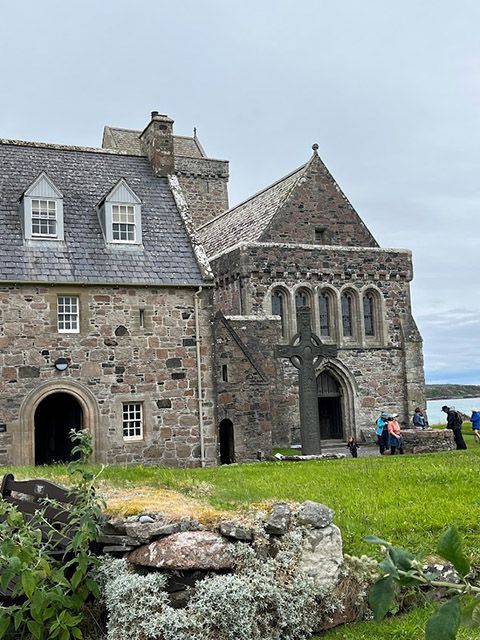
Cloisters of religious buildings always seem to be rather beautiful and most likely because of their architectural design and the play between light and shade convey feelings of serenity. Here on Iona the cloisters are no exception.
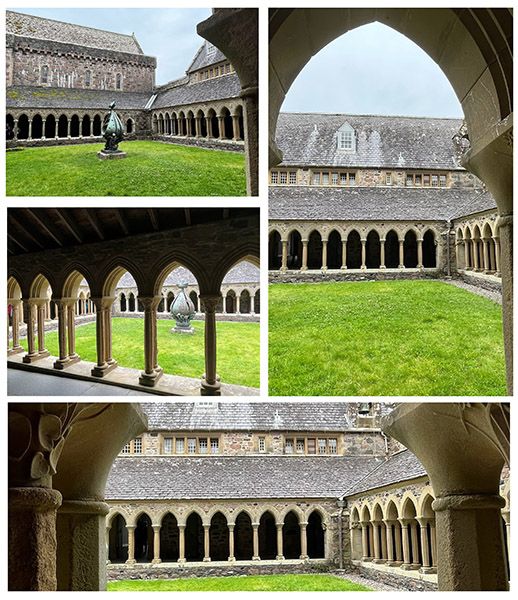
In many ways the ruins of the Nunnery are the most aesthetically pleasing of the buildings on Iona - for me anyway. Of course the restored Abbey and Chapel are essential for the preservation of the visual history of this place and the on-going use by contemporary religious communities. But for me I love the way Mother Nature is gradually folding her arms around the stone structures and gradually easing them back into the earth.
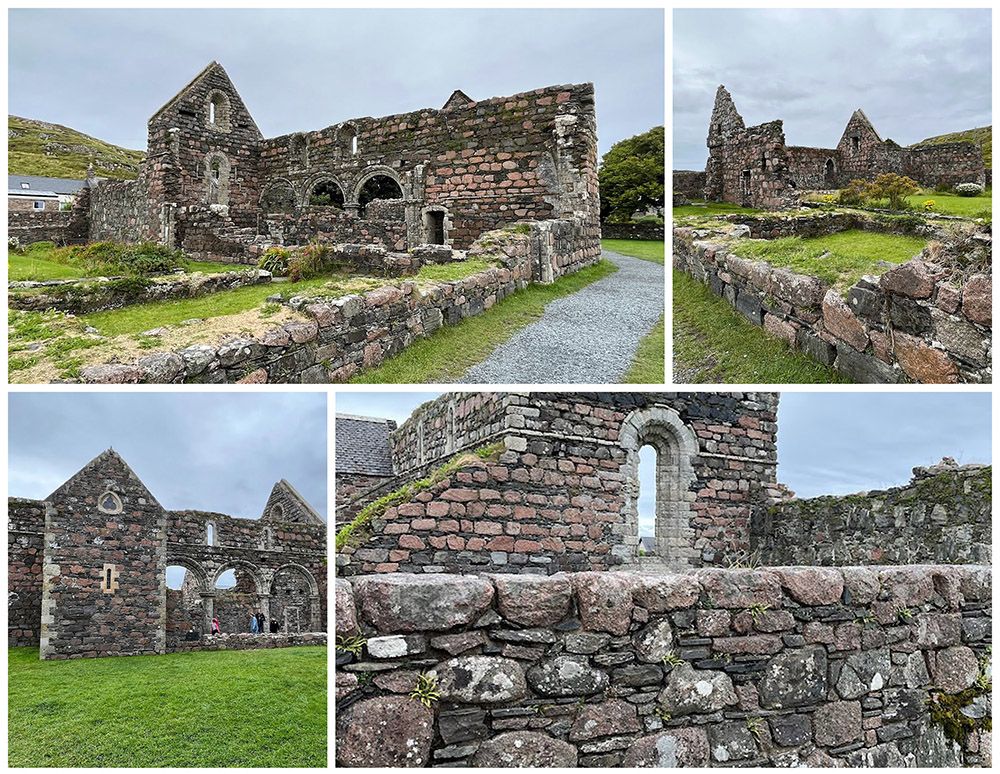
And it seems appropriate to conclude with the small graveyard of Reilig Odhráin on Iona where the remains of so many of this religious community have been laid to rest. Many early Scottish kings (said to be 48 in total), as well as kings from Ireland, Norway and France, are said to be buried in the Abbey graveyard. However, modern scholars are sceptical of such claims, which were likely mythic associated with increasing the prestige of Iona. Numerous leading Hebrideans, such as various Lords of the Isles and other prominent members of West Highland clans, were buried on Iona, including several early MacLeod chiefs.1
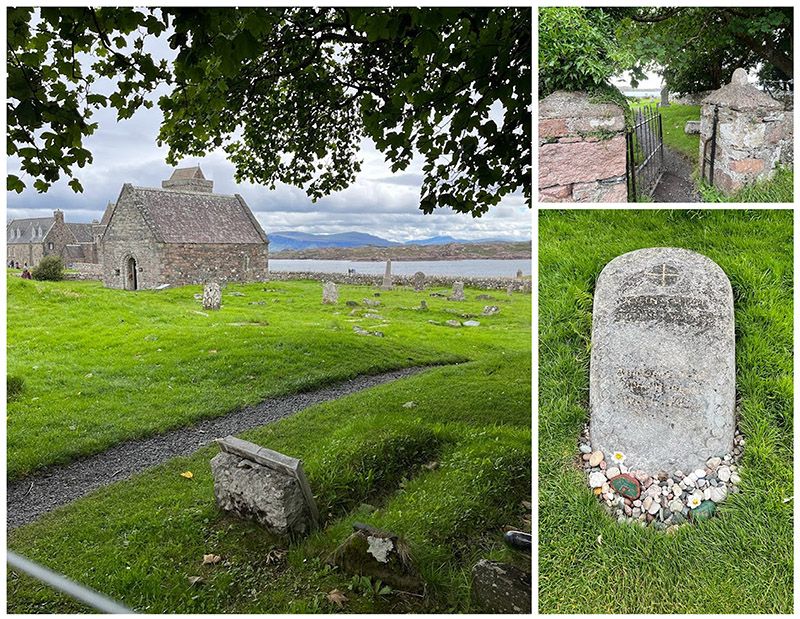
Iona’s spiritual life continues today, through the work of the Iona Community. In 2000 the Iona Cathedral Trust handed over the care of the Abbey, Nunnery, and associated sites to Historic Scotland.1
In June 2021, the abbey reopened following a £3.75M renovation, fund-raised by the Iona Community over three years, and including a renewable energy system and high-speed broadband.1
Tomorrow one last look at the coast of Scotland - through the eyes of an artist not a historian!
Credit
1. en.wikipedia.org
2. followthevikings.com
3. blosslynspage.wordpress.com
4. britainexpress.com
5. historicenvironment.sco
